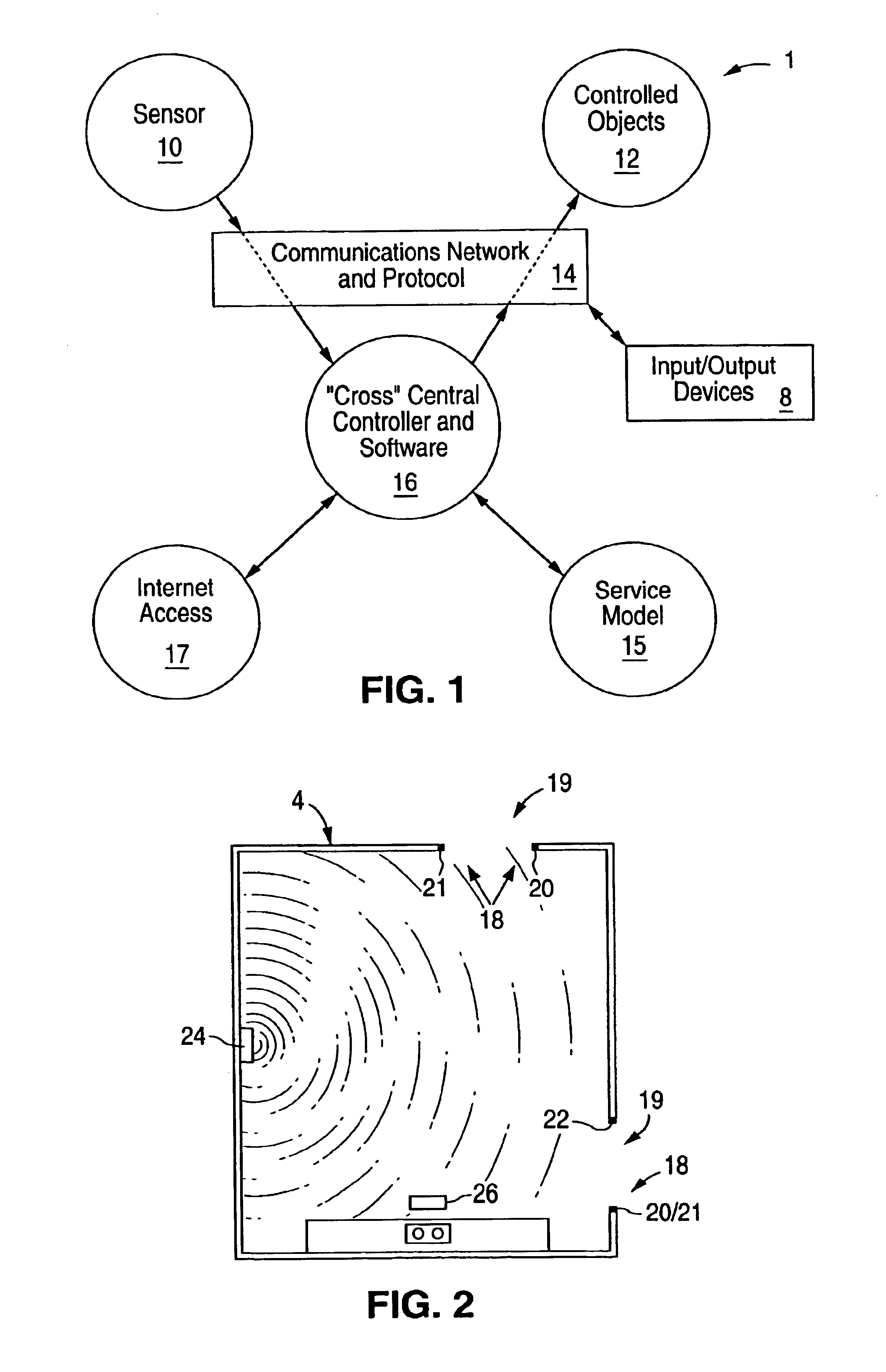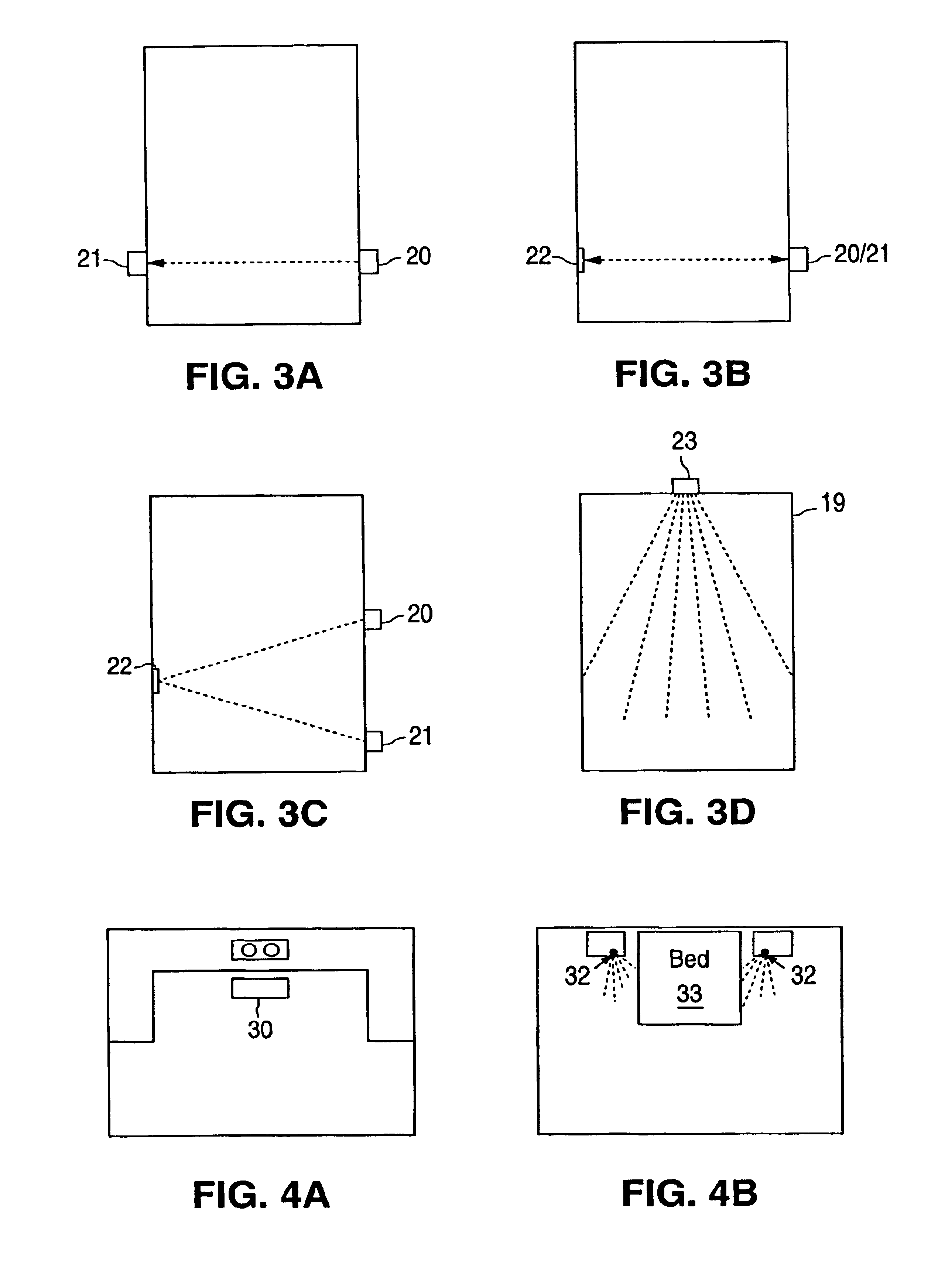Home automation system and method
a home automation and system technology, applied in the field of home automation, can solve the problems of many problems, slow and unreliable, and the x.10 protocol itself is slow and unreliabl
- Summary
- Abstract
- Description
- Claims
- Application Information
AI Technical Summary
Benefits of technology
Problems solved by technology
Method used
Image
Examples
Embodiment Construction
[0065]The present invention is a home automation system 1 as illustrated in FIG. 1, comprising six major components:[0066]A. A unique architecture of occupancy sensors 10 that accurately and quickly determine whether a room is occupied or vacant.[0067]B. A set of controlled objects 12 that “plug and play” with the knowledge-based central controller.[0068]C. A fast and reliable communications network 14 that supports a large set of commands and input / output devices 8.[0069]D. A knowledge-based central controller and operating software 16 (“Cross”) that leverages past experience in automating and controlling the controlled objects 12 and anticipates the home owner's life style.[0070]E. Internet access 17 that enables remote access and control.[0071]F. A service model that enable wide spread support and massive deployment of this system.
A. Sensor Architecture
[0072]The present invention uses a unique sensor architecture to accurately determine whether a room is occupied or vacant. The a...
PUM
 Login to View More
Login to View More Abstract
Description
Claims
Application Information
 Login to View More
Login to View More - R&D
- Intellectual Property
- Life Sciences
- Materials
- Tech Scout
- Unparalleled Data Quality
- Higher Quality Content
- 60% Fewer Hallucinations
Browse by: Latest US Patents, China's latest patents, Technical Efficacy Thesaurus, Application Domain, Technology Topic, Popular Technical Reports.
© 2025 PatSnap. All rights reserved.Legal|Privacy policy|Modern Slavery Act Transparency Statement|Sitemap|About US| Contact US: help@patsnap.com



